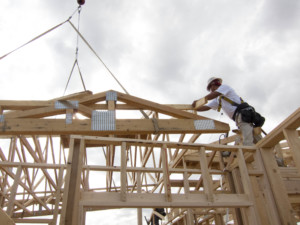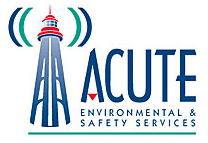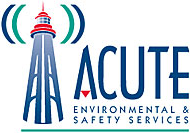Working at Heights Toronto: Must Know Safety News and Regulations
Construction work is known for being a dangerous occupation. Working at heights can cause serious and sometimes fatal injuries. In 2012, CBC News reported the Association of Workers’ Compensation Boards of Canada’s (AWCBC) statistics regarding workplace safety. Construction industries ranked as the number one most dangerous industry in Canada for workplace fatalities and the number three most dangerous industry in Canada for workplace injuries. Providing workers with quality, hands-on training is the best way to keep everyone safe on the job.
Working at Heights Toronto: Regulations
Did you know that working at heights training is required by law? Workers must receive updated working at heights training by October 1, 2017. There have also been recent amendments made to Construction Projects – O. Reg. 242/16 (amending O. Reg. 213/91) in regards to strengthening and clarifying the requirements for using suspended access equipment. The amendments came into force on January 1, 2017. Some of these new regulations include:
- Requirements for roof plans and other specific work plans
- New training requirements for workers who may use or inspect suspended access equipment
- Enhancement of the existing inspection, testing, and maintenance requirements
- For the full list and more information, visit the Ontario General Contractors Association and the MLITSD Notices page.
Working at Heights Toronto: In The News

Unfortunately, working at heights accidents happen at an alarming rate. In Canada, over 40,000 workers are injured every year on construction sites due to fall accidents. A quick internet search will show you how prevalent construction site incidents and accidents occur, even within Toronto and the surrounding areas.
Toronto, May 2016 – CBC News Toronto reported that a 28-year-old man suffered life-threatening injuries after falling four stories from a construction site.
• Lessons learned: Did you know that new and young workers are four times more likely to be injured during their first month on the job? Though we do not know how long this particular worker has been in the field, it’s important to remember that young, inexperienced workers are at greater risk. Older and more experienced workers with proper training can be great role models by practicing good WAH habits.
Toronto, April 2017 – CTV News Toronto reported that a man working at a construction site in Scarborough, ON suffered serious injuries to his foot after falling into a 10-foot deep trench. Firefighters rescued him and he was then rushed to the hospital.
• Lessons learned: Many assume fall accidents can only happen while working at heights from a building. However, this case shows that fall hazards are not so simple. When working on any construction project, it is important that supervisors make workers aware of all possible fall hazards.
Kitchener, March 2015 – Ontario Newsroom reported that a construction company
was fined $90,000 after a worker died  from a working at heights related injury. After a skid was incorrectly placed on the roof, it slid towards the young worker, knocking him off the roof. It is reported that although he did receive working at heights training, he was not wearing any fall protection equipment. The construction company pleaded guilty to failing to ensure that a fall restriction system was used where a guardrail system was not set up.
from a working at heights related injury. After a skid was incorrectly placed on the roof, it slid towards the young worker, knocking him off the roof. It is reported that although he did receive working at heights training, he was not wearing any fall protection equipment. The construction company pleaded guilty to failing to ensure that a fall restriction system was used where a guardrail system was not set up.
• Lessons learned: Once again, it is important to recognize the increased hazards for young and inexperienced workers. This case also shows the need for both practical training and proper use of appropriate fall protection equipment.
Hamilton, June 2016 – Ontario Newsroom reported that a construction company was fined $55,000 after a worker fell on site was injured. It was reported that the worker was not wearing fall protection equipment and that guardrails were not present.
• Lessons learned: Taking shortcuts to get the job done as fast as possible may seem like a cost-effective option, but in the end, it’s not. Workers lives are at risk and companies found guilty can be fined large sums of money – shortcuts are never worth it.
All workers, including workers who met the fall protection training requirements prior to April 1, 2015, must complete an approved Working at Heights training program by October 1, 2017. The deadline has been extended from April 1, 2017, to October 1, 2017. This provides employers with more time to comply with the new MLITSD requirements. Failure to complete WAH training by the deadline means employees cannot work!
Working at Heights Toronto – Where is Construction Happening?
The map below shows just a few of the current construction projects happening in Toronto. With so many low and high-rise condos currently being built, many workers are at risk of WAH injuries.
Source: https://condonow.com/Condos-for-sale/ON/Toronto/construction-status;Under-Construction
Supervisors working on these construction projects and other projects who have not yet provided up-to-date working at heights training for workers should consider the benefits of WAH training. Safety is the responsibility of both the employer and employee. Employers must provide workers with required training. Employees must use the information and knowledge gathered from WAH training and apply proper safety measures in the field.
Stop Working at Elevated Risk and Get Training
ACUTE’s Working at Height training program has been approved by the Chief Prevention Officer under the Ministry of Labour, Immigration, Training and Skills Development’s Working at Heights Training Program Standard and the Working at Heights Training Provider Standard. Stop working at elevated risk and get training today!
ACUTE’s Working at Heights Courses and Resources
Courses
Working at Heights (CPO approved)
 ACUTE’s Working at Heights course combines both theory and hands-on, practical training for an optimal learning experience. This program aims to strengthen workplace safety culture, provide knowledge on how to prevent accidents, provide information about proper use of safety equipment, and overall reduce the number of workplace falls and incidents.
ACUTE’s Working at Heights course combines both theory and hands-on, practical training for an optimal learning experience. This program aims to strengthen workplace safety culture, provide knowledge on how to prevent accidents, provide information about proper use of safety equipment, and overall reduce the number of workplace falls and incidents.
ACUTE’s Working at Height training program has been approved by the Chief Prevention Officer under the Ministry of Labour, Immigration, Training and Skills Development’s Working at Heights Training Program Standard and the Working at Heights Training Provider Standard.
 This training course is geared towards those working at heights in Industrial Establishments, Mining Operations, Health Care and Residential Facilities sectors, or other workplaces that are not Construction Projects. This flexible training course can be modified to best suit your specific industry’s needs, and to address workplace-specific equipment. This course includes hands-on practical training, detailed videos, handouts, quizzes, and classroom interaction with experienced instructors.
This training course is geared towards those working at heights in Industrial Establishments, Mining Operations, Health Care and Residential Facilities sectors, or other workplaces that are not Construction Projects. This flexible training course can be modified to best suit your specific industry’s needs, and to address workplace-specific equipment. This course includes hands-on practical training, detailed videos, handouts, quizzes, and classroom interaction with experienced instructors.
 This course focuses on the dangers of working at heights from a scaffold or ladder, and how to prevent accidents and incidents. Our Scaffolding and Ladder course teaches participants how to work safely from ladders and scaffolding, including how to properly dismantle them after use. Participants will learn how to properly identify workplace hazards related to scaffolding and ladders, how to identify safe scaffold setups, how to identify different types of ladders, and understanding legislation.
This course focuses on the dangers of working at heights from a scaffold or ladder, and how to prevent accidents and incidents. Our Scaffolding and Ladder course teaches participants how to work safely from ladders and scaffolding, including how to properly dismantle them after use. Participants will learn how to properly identify workplace hazards related to scaffolding and ladders, how to identify safe scaffold setups, how to identify different types of ladders, and understanding legislation.
ACUTE’s WAH Online Resources
Equipping yourself with up-to-date working at heights knowledge is the best way to keep yourself and others safe on the job. ACUTE also offers many online WAH resources (listed below) to help both employers and workers understand all there is to know about working at heights safety.
Fall Protection Training: How We Offer The Best Training
How To Perform A Working At Heights Risk Assessment Of Your Workplace
Working At Heights Training – CPO Training Provider
Working at Heights Safety – Best Resources Around the World
Working at Heights Quiz: Start and Finish with the Best
Working at Heights Ontario: A People & Business Case for Training
Issues and Limitations with Online Working at Heights Training in Ontario
Get Certified Working at Heights Training by a CPO, and OWWCO Certified Trainer
ACUTE’s Working at Heights Training
With over 100 years of combined experience, you can be sure to receive quality, hands-on training from knowledgeable and experienced staff. ACUTE’s Working at Heights course aims to strengthen workplace safety culture, provide adequate knowledge about fall hazards and prevention, provide workers with sufficient knowledge regarding the use of fall protection equipment, and reduce the number of fall-related incidents, injuries, and fatalities. Here are some of the differences when training with ACUTE:
- Open Door Instructor-Student Partnership – ACUTE’s training services emphasize client participation. Our Staff
 want to build a relationship with clients and serve as a touchstone for advice anytime moving forward.
want to build a relationship with clients and serve as a touchstone for advice anytime moving forward. - Serving Your Team and Industry – With a vast array of clients in manufacturing, construction, health, academic, and government sectors, ACUTE brings the best safety practices from across the spectrum to your workplace.
- 100 Years Combined Experience – ACUTE provides comprehensive health and safety training, on-site safety services, and consulting services. With over 100 years of combined experience, our company staff offer more than theoretical or abstract ideas. ACUTE offers solutions.
- Track Record of Success – ACUTE is rated 4.9/5 stars on Google reviews, demonstrating a commitment to our clients, quality, and passion for training.
“We have used Acute Environmental & Safety Services Inc. for many years and our personnel always come back well trained, energized and bringing lots of ideas. They are provided with substantial and in-depth knowledge together with challenging opportunities to put into practice what they have learned into our field operations.”
– Dante, Environmental Service Company, more testimonials here
Contact us today for quality training in your workplace or on-site at ACUTE’s proven training facilities!
ACUTE is located in Waterloo, Ontario, and services customers from the cities such as Toronto, Mississauga, Brampton, Hamilton, Milton, Kitchener, London, and Guelph as well as other cities from across Ontario.
http://www.ohscanada.com/overtime/people-are-falling-statistics-are-not/
http://www.cos-mag.com/personal-process-safety/29902-top-10-most-dangerous-jobs-of-2016-revealed/
http://www.theglobeandmail.com/life/the-hot-button/and-the-top-10-most-dangerous-jobs-are/article16352517/
https://www.labour.gov.on.ca/english/hs/pdf/workbook.pdf

